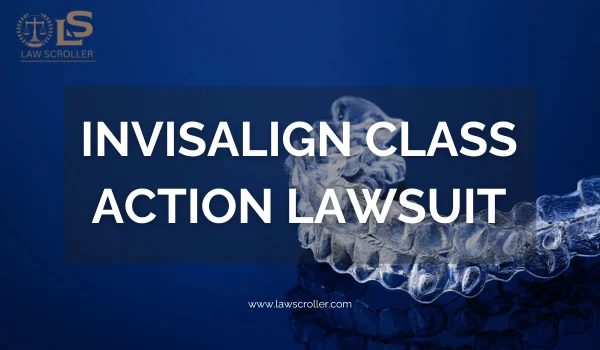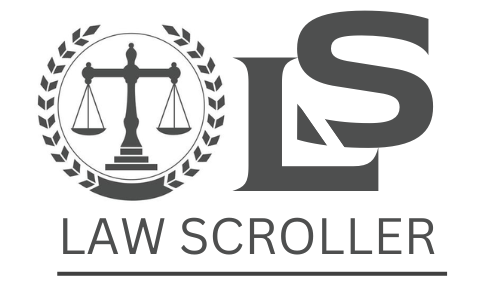In recent years, legal headlines have included a surprising contender in consumer class actions: Invisalign. That’s right — the clear teeth-straightening aligners many people think of as sleek, modern, and consumer-friendly are now at the center of a class action lawsuit over pricing and competition.
You might wonder: What’s the “Invisalign class action lawsuit” all about? Who can claim? Is there a settlement? If you’ve ever bought aligners or paid for Invisalign treatment, these questions matter to you. Let’s break it down in plain English.
What is the lawsuit about?

The current major class action against Align Technology (the company behind Invisalign) is an antitrust / price-fixing case. Plaintiffs allege that Align entered into agreements with SmileDirectClub that restricted competition, thereby keeping prices artificially high for aligner treatments.
Specifically, the claim holds that Align agreed not to compete directly in the “direct-to-consumer” market (i.e., selling aligners straight to consumers), allowing SmileDirectClub to charge higher prices. In return, Align allegedly got benefits from SmileDirectClub’s profits or business structure.
Align denies any misconduct. But to avoid years of litigation, it has reached a proposed settlement in which it will pay a large amount in cash to resolve the claims.
Another related class action involves Invisalign direct purchasers (dentists or practices buying directly from Align). They allege that Align’s practices forced them to pay higher prices and restricted competition in both the aligner and scanner markets.
Why it matters
If the class action is approved, consumers and dental practices who bought Invisalign or SmileDirectClub aligners during the relevant timeframe may benefit financially. It also sends a message about how dominant companies must behave in competitive markets.
Who’s Affected (Who Can Claim)
Here are the key groups involved:
- Consumers / Users of SmileDirectClub Aligners
Under the Snow v. Align Technology settlement, people who bought or paid for SmileDirectClub aligners for personal use between October 22, 2017 and August 18, 2022 are eligible.
You may not even need proof of purchase, depending on how the class administrator handles claims.
- Direct Purchasers (Dentists / Orthodontic Practices)
Another class, in the “Simon & Simon PC et al. v. Align Technology, Inc.” case, includes dental practices that bought Invisalign aligners directly from Align between January 1, 2019 and March 31, 2022.
- Excluded Parties
People or entities affiliated with Align, government entities, or those who opted out of the class may be excluded.
Simple Timeline (Lawsuit → Settlement)
Here’s how the Invisalign class action litigation has unfolded so far:
| Date / Period | Event |
| 2021 | Plaintiffs file class action complaints alleging antitrust violations by Align. |
| 2023 | The court certifies the class of direct purchasers (dentists) for 2019–2022 purchases. |
| 2024 (Aug.) | Align agrees to a $27.5 million settlement for the consumer-SmileDirectClub case. |
| 2025 (Feb.) | Judge blocks the coupon-style version of the settlement, citing concerns that it benefits Align’s dominant position. |
| 2025 (Apr.) | Align agrees to a revised $31.7 million all-cash settlement (no coupons) to resolve the antitrust claims. |
| Now | Parties await final court approval; deadlines for claims and objections are being set. |
As of now, no settlement is final; it still needs court approval.
What’s at Stake
For Consumers / Users
- Cash payments: Under the proposed settlement, each eligible class member might receive $40–$60, though minimums may apply.
- No need for proof: In many cases, the class administrator uses existing records to pay people automatically.
- Right to opt out: You can choose not to be part of the class if you want to preserve your own claims.
For Dental Practices / Direct Purchasers
- Monetary recovery: If their class prevails, practices that bought Invisalign directly may recover overpayments caused by anti-competitive practices.
- Injunctive relief: The lawsuit also seeks orders that prevent Align from continuing anti-competitive conduct.
For Align Technology
- Cost of settlement: Align would pay $31.7 million (or the approved amount) to avoid extended litigation.
- No admission of wrongdoing: Align denies it violated antitrust laws.
- Potential reputational impact: The case shines scrutiny on Align’s market dominance and business practices.
What to Watch Next (Case Update & Future Possibilities)
- Final Court Approval
- The judge must decide whether the proposed settlement is fair, reasonable, and adequate.
- The earlier coupon-style settlement was rejected.
- Claims Deadline
- Consumers and practices must file any claim forms by a certain date. For the consumer class, that deadline is October 27, 2025.
- Objections / Opt-Outs
- Class members may object to parts of the settlement or choose to exclude themselves.
- Appeals
- Even after approval, Align or objectors might appeal, which could delay payments.
- Future Antitrust Litigation
- Additional claims or related suits might proceed, especially in the scanner market or involving other dental devices.
- Monitoring Implementation
- After the settlement is approved, you’ll want to watch how payments are distributed and if there are administrative issues.
FAQ: Invisalign Class Action Lawsuit
Q1: Is there an “Invisalign class action settlement” already approved?
Not yet. Align has agreed to a $31.7 million all-cash settlement to resolve the antitrust claims, but the deal needs court approval before payments can be made.
Q2: Who can claim under this lawsuit?
- Consumers who purchased SmileDirectClub aligners between October 22, 2017 and August 18, 2022.
- Dental practices that bought Invisalign directly from Align from January 1, 2019 through March 31, 2022.
Q3: How much might I receive?
Consumers in the class are estimated to get $40 to $60, with a guaranteed minimum amount.
The amount for direct purchaser practices will depend on the calculations laid out in that class and the outcome of the case.
Q4: Do I need proof of purchase?
No, proof is not always required. The class administrator will use existing records to identify eligible class members.
Q5: What if I don’t want to participate in this class action?
You can opt out (exclude yourself) if you prefer to preserve the right to bring an independent lawsuit. But doing so means you won’t receive money from this settlement.
Q6: What happens next in the case?
If the court grants approval, the settlement will be implemented. People in the class will submit claims or receive automatic payments. If not approved, litigation may continue, or a new settlement may be proposed. Also, appeals or objections may arise.


 Oliver Johnson is LawScroller’s Senior Legal Correspondent specializing in civil litigation, class actions, and consumer lawsuit coverage. He breaks down complex settlements and court decisions into clear, practical guidance for readers.
Oliver Johnson is LawScroller’s Senior Legal Correspondent specializing in civil litigation, class actions, and consumer lawsuit coverage. He breaks down complex settlements and court decisions into clear, practical guidance for readers.